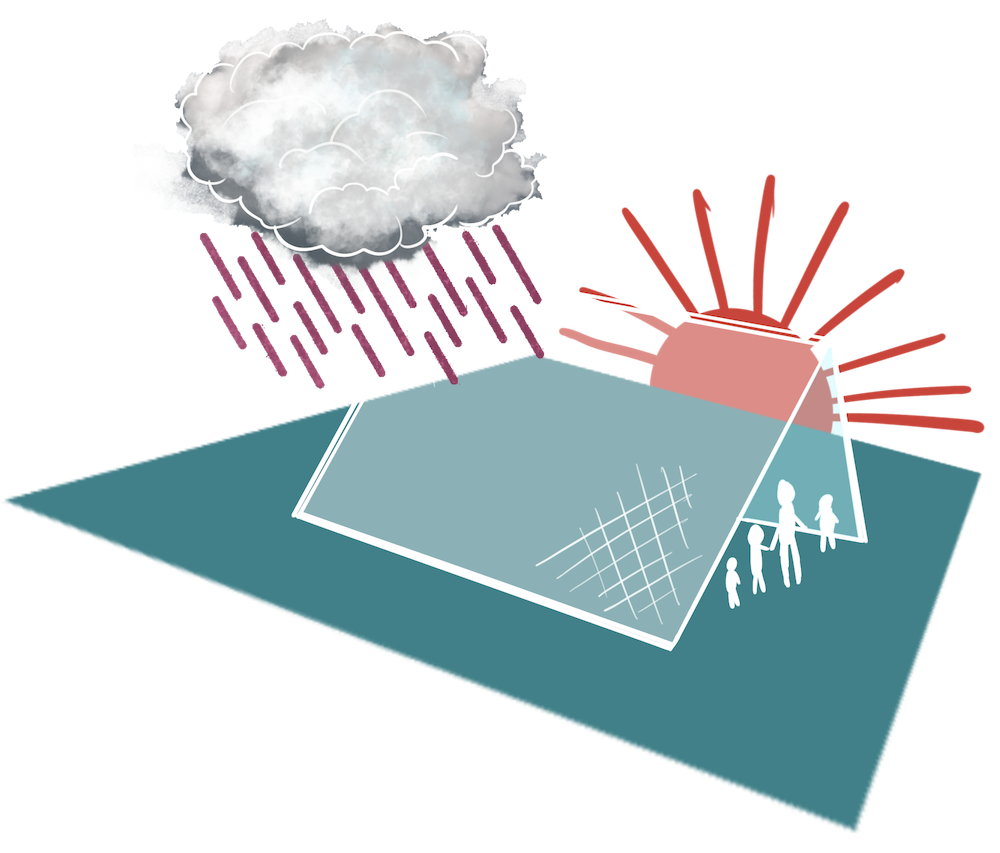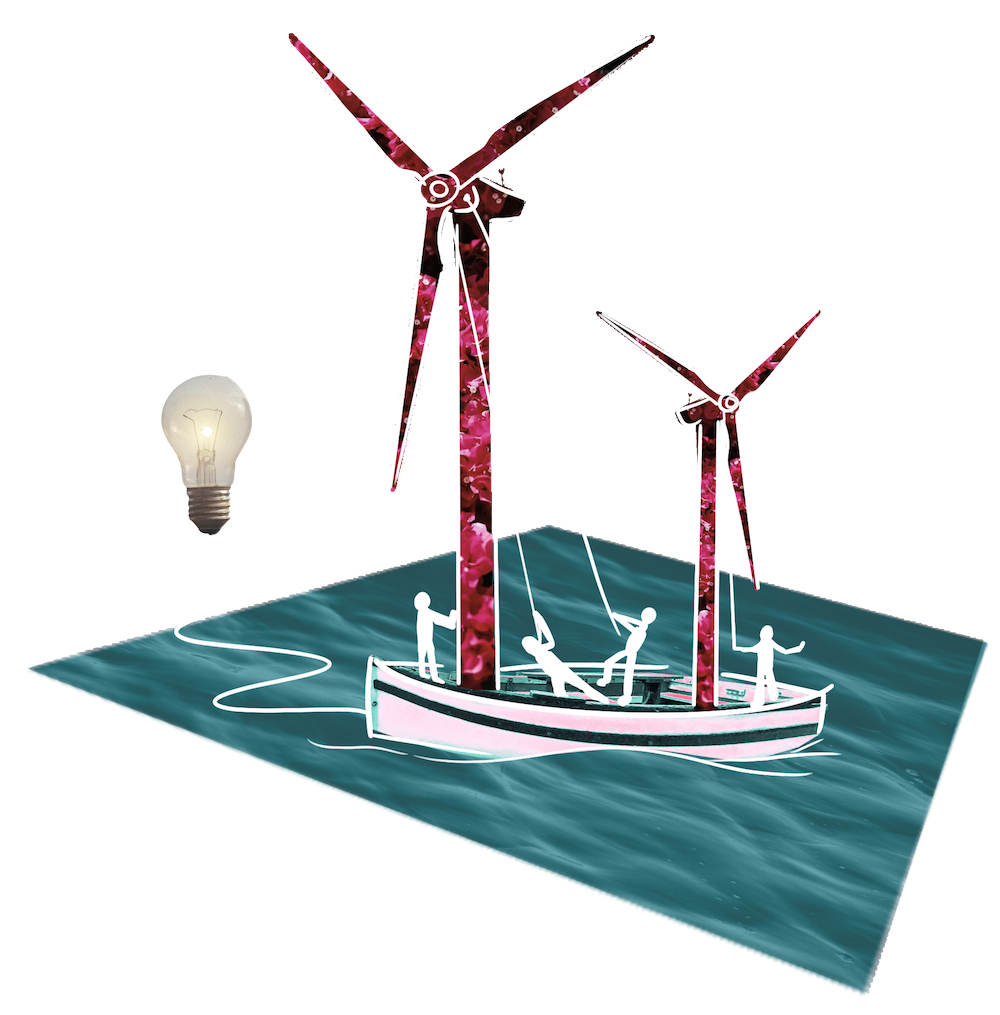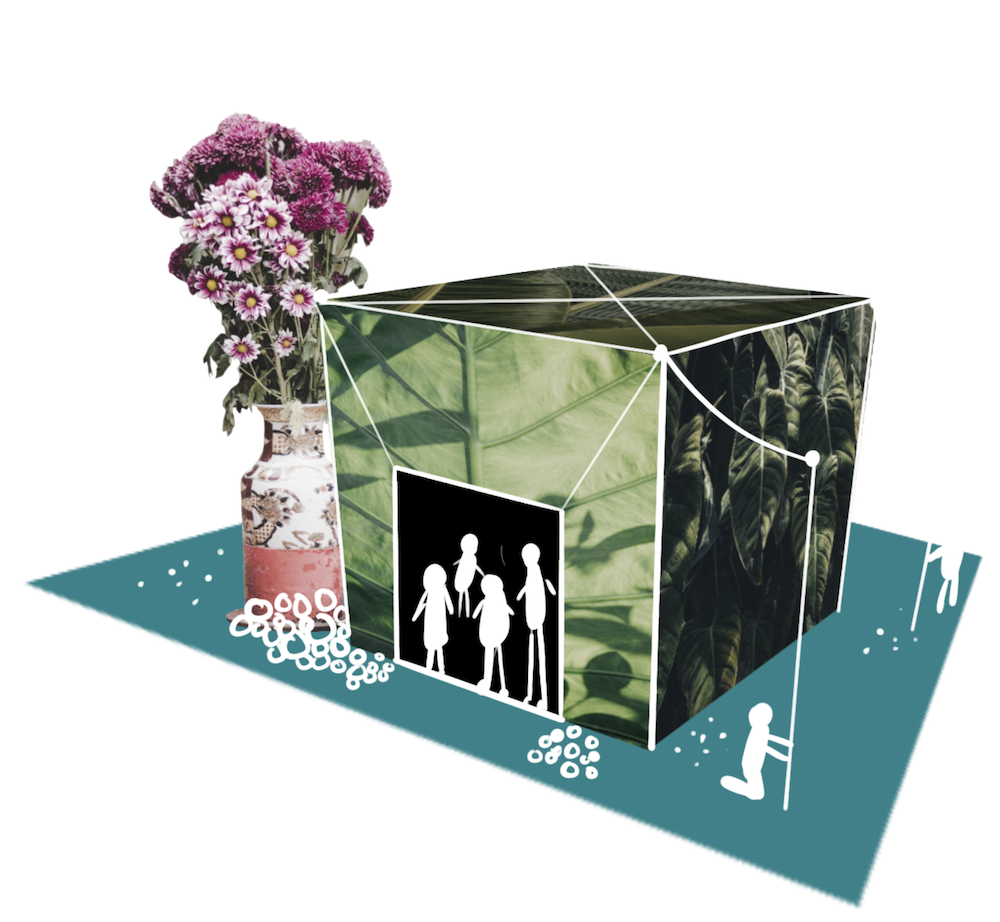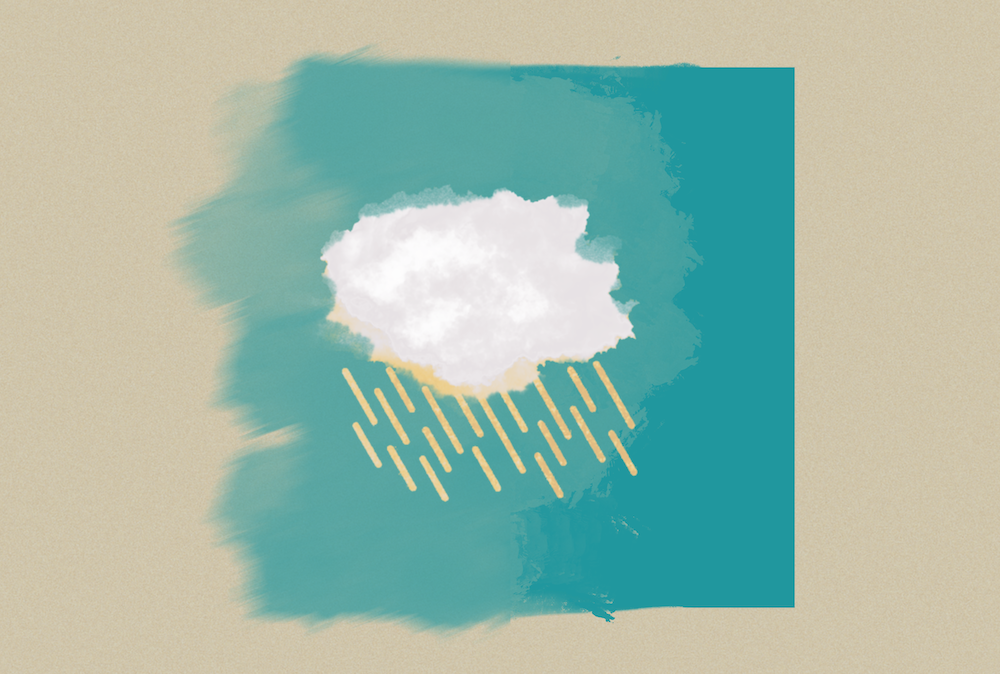By Ariana Monteiro
Brazilian cliché, Ariana Monteiro loves samba, soccer, and Carnaval. Her goal is to confuse and deconstruct certainties about emergent technologies, social justice, and human rights through future thinking methodologies. While also showcasing cultures, creativity, and bits of knowledge produced in the Global South.
“Invented histories, invented biologies, invented cultural affinities come with every identity; each is a kind of role that has to be scripted, structured by conventions of narrative.”
Kwame Anthony Appiah
From your ancestors’ genetic memories to the wildest dreams that inhabit you, to the moments that make your heart beat alongside the rhythm of excitement, such as falling in love. What are the emotional borders that define you? What would you say is the pathway to touching the future and leaving your mark on it? A cartography of consciousness is a radical shift that dares you to feel the future through the consciousness of our bodies. In this scenario, with the help of emerging technologies, affect and emotions are given a central role in designing the sustainable tomorrows that bind together the social fabric.
Who are you?
No offence, but I’m not interested in your surname or your national identification number. I know that this might be too personal, but I’m asking about the real you. I bet that in order to find the best way of answering my question, you are now navigating many of your life experiences. I also bet the experiences you’re turning to at this moment are connected to special memories of people and places. Am I right? I made all these assumptions because however unique the background of your own existence may be – it always comprises social and emotional dimensions. Identity is a relational construct intrinsic to community bonds. By observing, learning, connecting, or talking with others, we start to understand a little bit more about our own minds, expectations, and emotions.
From the day we were born to our last moments in life, these connections are woven through us in many different ways. Identity, therefore, is not a fixed condition. It is a sort of in-motion puzzle driven by strands of desire and history. Motions, emotions, and effects often combine several pieces of nostalgia, belonging, and attachment according to a given context, granting us our sense of self through bonding experiences. Identity combines numerous configurations from the past, notions of the present, and expectations for the future [1].
As beautiful as it sounds, the emotional bonding of identity formation can also be tricky. We tend to think that emotions are harmless since they inhabit the realm of ideas rather than what we call the physical world. The thing is, while we intimately rely on identification processes with others, we are also subject to others’ political perceptions about ourselves.
In some configurations, this means that others can vocalise their thoughts about us and act upon these perceptions. For instance, the emotions someone might hold towards you can manifest in the physical world through experiences of inclusion or exclusion and determine which places and groups you can access and belong to, and which ones you can’t. Therefore affect, disaffection and emotions impact not only your self-image but your selfhood, your body, and even your capability to imagine the future. The interdependence between emotions and politics may open our political imaginaries to new possibilities of attachment, filiation, and articulation of better tomorrows by leaving a mark wherever we go.
Categories we live by or live in?
So if emotions and even our identity gain life through the action of our body in the physical world, what does really means to have a body? What are the implications of it? From the moment of our very first breath, our bodies are threaded by the politics, values, and cultures of our environment. All sorts of technologies place individuals in social categories that frame one’s actions, self-understanding, and opportunities in life. The categories we belong to are neither metaphors nor phenomena. Instead, they represent the physical reality of many emotional perceptions that attach reductionist labels to many lives [2]. Black, straight, white, lazy, smart, lesbian, clumsy, wealthy, yellow, vulnerable, poor, refugee.
Being labelled under a category, it’s not necessarily a bad thing. Until it is. As an illustration of this, we can think about the procedures many companies have to profile and rate consumers. The American Congress and federal regulators found highly biased categories among data brokers [3] such as “Established Elite,” “Rural and Barely Making It,” “Tough Start: Young Single Parents,” or “Ethnic Second-City Strugglers”. With this data handy, data brokers sell products that identify financially vulnerable consumers and sell them high-cost loans and other financially risky products. In a society model where everyone and everything is for sale, a category can quickly become a target. Like nations can dispute territories, companies can dispute humans based on their different conditions as if the body was the battleground of economic elites.
The disruption of information brought by digital technologies goes even further than techniques of consumer classification online. Governments now embrace the same classificatory mechanism as companies, relying on citizens’ digital traces for the distribution of rights and public services and security measures. Through the usage of Big Data and AI, real-time monitoring shows relevant insights to aid the public decision-making process. However, this does not mean that the state of technological development is immune to giving advantages to one form of political or economic organization to the detriment of others.
Actually, recent experiences have shown that the deployment of these tools are replicating or even amplifying human bias, impacting the quality and fairness of decision-making, as seen in the case of UK Visas and Immigration, which proved that automation caused African applicants to be rejected twice as much as those from any other part of the world [4]. Under the populist narrative, surveillance technologies could be weaponised against marginalised groups, widening societal tensions. For a while now, U.S. Immigration and Customs Enforcement officers in New York have been using a rigged algorithm to keep virtually all arrestees in detention, since the Trump administration recommended detention without bond for “low risk” individuals exploded to 97 percent [5]. Being labelled under a category in many cases can mean a threat.
But this is just the tip of the iceberg. Worldwide, we are witnessing a dramatic shift from “over the skin” to “under the skin” surveillance [6]. Countries are already deploying tools on citizens that are normally reserved for tracking terrorists [7], controlling resources and borders, and regulating the flow of people and goods within territories [8]. But there’s a difference though. While the territory can be perceived as a piece of land that we can choose to cross or dwell in, the ultimate territory we live in is our body. Just like territories, people are being scanned, screened, and monitored. From movements to feelings, ubiquitous sensors and powerful algorithms are now actively measuring, quantifying, and analysing how one walks, speaks, or smiles. The problem is, when your body turns into your main credential to navigate through the world, there’s literally no place to hide. As poet and author Luisa A. Igloria says: “I am the shore I left behind as well as the home I return to every evening. The voyage cannot proceed without me.”
People, places, and technology
As seen up to this point, our identity is a constructed idea that gains life in the physical world through the movement of our bodies. The places we visit, the people we meet, the connections created along the way. The feelings we feel during life’s journey are so significant that they can be inscribed in our DNA. For instance, emergent scientific evidence states that experiences of hardship or violence such as those seen in forced displacement cases may change our genetic expression [9] as a biological mark of traumatic legacies passed from one generation to the next, no matter what. The potential of this emergent evidence should inspire us to pursue paths that provide better experiences to be inherited by the next generations.
In one sense, globalisation has delocalised identity into multiple forms of diasporic belonging. That means one can be the first generation of their family living abroad, and so their connections, originating in the same place, are dispersed across different locations. Thus, like identity itself, diaspora is somewhat akin to the notion of the self, built upon community bonds, along ancestral migration routes. When placed side-by-side, both terms altogether prepare the soil to grow a different type of belonging, sustained by the displaced body and its links with a remembered homeland, whether real or imagined. Diasporic identities touch narratives of contact curated and reworked over time across generations separated by time, geography, language, and culture.
Through emotional exchanges occurring in the nodes of diasporic networks, one’s body can feel welcomed and understood. As a result, diasporic cultures are conceived by questioning the virtuality of matter, life, body, and the self; the very same basis that supports the spread of global digitalisation. Just think how the rapid digitisation of human experiences made it possible to connect, engage and share experiences with others without being constrained within geographical borders but across the virtual spaces of the Internet [10].
Yet, as previously mentioned, tech-assisted solutions can either reproduce the patterns of the past and further entrench emergent inequalities, or they can be an equaliser if recognised in terms of human rights, and track systemic inequalities to target better public policies. Its impact and who gets to share its potential benefits are grounded in political choices and the reconfiguration of economic forces that drive society towards an unbalanced distribution of resources and opportunities.
So, my political curiosity would be: If the body is the territory of our experiences, which resources and tools can we use to map it accordingly? How can we build a sustainable infrastructure for the agency of the body on the move? With these questions in mind, I invited a small group to a foresight exercise with the objective of exploring the triangular relationship between people, places, and technology while also gathering all sorts of emotions that could arise along the way.
The group was composed of colleagues from UNHCR’s Innovation Service and also from Envisioning, an intelligence platform for emerging technology. Thanks to their cooperation, resources, and inputs, it was possible to develop a map of present-day technological elements to discuss UNHCR’s probable futures. After long hours of conversations and tons of exchanged knowledge, I could assess 75 emergent technologies from Envisioning’s database [11] according to their potential impact on challenges UNHCR faces today in aid operations for refugees, forcibly displaced communities, and stateless people. After these phases, we were ready for the foresight exercise in which the participants were invited to imagine the future of the movement from a fictional migration situation. In this scenario, the groups had to deal with a cybernetic war situation triggering migration flows amid rising oceans issues; the preparation of temporary shelters to receive displaced populations; and finally, the construction of a new island built from the ground-up. The goal was to narrow down the long list of technologies as much as possible and to come up with three durable tech-assisted solutions.
The Cybernetic War Solution

Chosen technologies:The decisions from the teams and chosen technologies were chosen to encompass the below characteristics and qualities:
Data Enclave – This technology shares information derived from data rather than sharing the actual data itself. It provides a confidential, protected environment in which authorised researchers can remotely access sensitive content.
Collaborative Culture-Sensitive AI – Collaborative algorithmic structures trained with inputs derived from minority communities as a means to preserve traditional cultural heritage, endangered languages, and customs.
National Firewall – A combination of cyber policies and software to regulate the World Wide Web inside a country. These firewalls block or limit access to foreign websites, throttle international internet traffic, and provide benefits to national digital services.
The New Island Solution

Chosen technologies:
Floating Wind Turbine – An offshore wind turbine mounted on a floating structure that generates electricity in water depths where fixed-foundation turbines are not feasible.
Digital Debate Council – Digital spaces in which citizens are able to arrange online meetings with each other, present their opinions, and vote on various management issues. The output is recorded securely via blockchain and recognised as an official meeting.
Decentralised Wastewater Treatment – A facility that manages smaller quantities of wastewater from decentralised communities, enabling the treatment of water at the point of use.
The Temporary Shelter Solutions

Chosen technologies:
Portable Factory – Instead of rigid and geographically fixed structures, portable and autonomous manufacturing sites can be placed in freight containers to produce on the go.
Self-Sovereign Identity – Cryptographically secure identification records that allow users to control third-party transmissions and visibility of personal data. Based on the blockchain, this solution could help individuals to regain ownership of their own data, as it would serve as a single personal identity.
Decentralised Energy Grid – Decentralised energy distribution points located nearer to consumers that are able to supply energy to local communities independently of large-scale energy plants.
Earnings brought from the future of movement
Even though technologies have shaped our habitat for such a long time, technology itself is not a force of nature. Thus, it’s vital to avoid techno-determinist assumptions that usually come side by side with narratives of modernist progress by “untangling the social content of technologies”[12]. Perhaps that is why the final technology list narrowed through exercise, reveals a growing awareness of how diffused forms of power and authority can secure “some sort of order” even in the absence of state activity – rather than the technical aspect of such innovations. When looking at these technologies amid a crisis scenario, we’re talking about emotion and actions they can unleash.
Diffused power can also mean higher levels of autonomy and self-determination (essential pieces of psychological well-being) to facilitate collaboration where it is most needed. Combined, these technologies may cede the required conditions to embody autonomy, competencies, and connections from virtually anywhere, since they are either portable, adaptable or dematerialized through the web. When looking at their future potentials we’re not talking about things that can be broken and fixed. Alternatively, we are talking about tools that can assist the journey of a conscious, complex, and emotional body on the move. A body that carries its belongings, its legacies, and its expectations for the future.
Understanding this is vital since the emotional responses that follow a disaster or other traumatic event can either help us cope with traumas or stimulate memories of the disaster creating heightened anxiety. Whenever a disaster hits, society is affected by a reality shock in which time and space seem suspended. We see ourselves floating in the void of emotions. Grief, helplessness, solidarity, empathy, indifference, or apathy are just a few examples of the multiplicity of sensations that can inhabit the same social void. Different groups of people can simultaneously carry out divergent agendas and ideas to cope with a unique event. Nevertheless, emotions have mostly been absent in crisis response mechanisms while over-represented in media, which usually frame these events like a movie screen.
Headlines, captions, and soundtracks are orchestrated with degrees of reality that everyone finds moving when on the outside looking in and safely distanced. Sensations are produced from the catharsis of the media. Catharsis is a Greek word meaning purgation, cleansing, or purification. In Politics (1342a 8–10), Aristotle used this concept to signify a cleansing of passions such as fear and piety [13]. Many others tried to reappropriate the term and go further into its meaning, mainly in psychological and therapeutic domains. Freud and Breuer defined catharsis as “the process of reducing or eliminating a complex by recalling it to conscious awareness and allowing it to be expressed” in Studies on Hysteria.
Reading Reinventing Intimacy – the Politics of Daily Suffering by the psychoanalyst Christian Dunker, I learned that disasters can trigger two types of catharsis. One operates in a vague terrain, disseminating sensations and integrating them into the social imaginary without really addressing them – a kind of survivor guilt that aims to control the narrative by spurring the urge to take care of others without actually doing it. The other is based on disintegration, which means detangling emotions and feelings and innovating from them to transform the tragedy. “The first doesn’t teach us any more than we don’t know now; the second opens us all to an unpredictable future – a common one” [14].
The problem is that we usually operate on the first type only. In a vicious cycle, we use narratives of care to promote control over our own feelings and other’s destiny. In the face of tragedy, we have the bad habit of responding in the same way to events that should be treated as singular and unique such as crisis settings, including war and natural disaster settings, each has its own contexts and situations that requires adaptable ways of providing care. Yet, to avoid handling our emotions, we choose to close our eyes and follow the protocol. The solutions and aid plans that emerge from this tragic scenario reflect that. The same goes for the way we deploy certain technologies on-field. What grants legitimacy to many institutional operations is the trust citizens bestow on individuals chosen to make decisions on their behalf, the trust that they will be taken care of.
Technologies can strengthen humanitarian operations’ legitimacy through a series of commitments accomplished throughout time, but only if a new mindset is put in place. We must take care of ourselves as fully biological creatures. Our body is equipped with exceptional technologies, we sense, monitor, and adapt ourselves to the situations we find ourselves in, through different types of emotional catharsis. We should innovate, taking that into account; otherwise, we merely ignore a vital part of the equation. And maybe that way, we’ll be able to design better future social tools that can empower us to move away towards happier times instead of trying to control whatever traumatic events happen in-between.
References:
[1] Lähdesmäki et al. Fluidity and flexibility of “belonging”: Uses of the concept in contemporary research. 2016. Available from: https://www.researchgate.net/publication/298795295_Fluidity_and_flexibility_of_belonging_Uses_of_the_concept_in_contemporary_research
[2] Alter, Adam. How labels like ‘black’ and ‘working class’ shape your identity. 2015. Available from: https://theweek.com/articles/464854/how-labels-like-black-working-class-shape-identity
[3] United States Senate. A Review of the Data Broker Industry: Collection, Use, and Sale of Consumer Data for Marketing Purposes. Available from: https://www.commerce.senate.gov/services/files/0d2b3642-6221-4888-a631-08f2f255b577
[4] Visa Problems For African Visitors To The Uk. A joint All-Party Parliamentary Group Report by the APPG for Africa, the APPG for Diaspora, Development & Migration and the APPG for Malawi. 2019. Available from: https://royalafricansociety.org/wp-content/uploads/2020/01/APPG-Report-on-Visa-problems-for-African-visitors-to-the-UK_v1.58web.pdf
[5] Robertson, Adi. ICE rigged its algorithms to keep immigrants in jail, claims lawsuit. 2020. Available from https://www.theverge.com/2020/3/3/21163013/ice-new-york-risk-assessment-algorithm-rigged-lawsuit-nyclu-jose-velesaca
[6] Harari, Yuval Noah. The world after coronavirus. 2020. Available from: https://www.ft.com/content/19d90308-6858-11ea-a3c9-1fe6fedcca75?segmentid=acee4131-99c2-09d3-a635-873e61754ec6&fbclid=IwAR3eo_sfLFp-NLgUJ43C9YQFad2-WKD09q7dEo9c0J1klCn2CEcPW7I4Bbw
[7] Halbfinger, David; Kershner, Isabel; and Bergman, Ronen. To Track Coronavirus, Israel Moves to Tap Secret Trove of Cellphone Data. 2020. Available from: https://www.nytimes.com/2020/03/16/world/middleeast/israel-coronavirus-cellphone-tracking.html
[8] Saran S, Singh P, Kumar V, Chauhan P. Review of Geospatial Technology for Infectious Disease Surveillance: Use Case on COVID-19 [published online ahead of print, 2020 Aug 18]. Journal of the Indian Society of Remote Sensing. 2020;1-18. doi:10.1007/s12524-020-01140-5
[9] Curry, Andrew. Parents’ emotional trauma may change their children’s biology. Studies in mice show how. 2019. Available from: https://www.sciencemag.org/news/2019/07/parents-emotional-trauma-may-change-their-children-s-biology-studies-mice-show-how
[10] Macfadyen, Leah P. Virtual Ethnicity: The new digitization of place, body, language, and memory. 2006. Available from: https://open.library.ubc.ca/cIRcle/collections/ubccommunityandpartnerspublicati/52387/items/1.0058425
[11] The Future of Movement. 2021. Available from: https://radar.envisioning.io/unhcr/innovationservice/?pg=welcome
[12] MacKenzkie and Wajcman. The Social Shaping of Technology. 1985. Available from: https://www.tandfonline.com/doi/abs/10.1080/08109028508629013
[13] Aristotle. (2013). Politics. The project Gutenberg ebook of politics by Aristotle, EBook #6762. Available, from http://www.gutenberg.org/files/6762/6762-h/6762-h.htm
[14] Dunker, Christian. Reinventing Intimacy – the Politics of Daily Suffering, 2017. Available from: https://25thcenturymag.com/christian-dunker-the-25th-century-interview/
This page is part of UNHCR’s Project Unsung collection and portfolio. Project Unsung is a speculative storytelling project that brings together creative collaborators from around the world to help reimagine the humanitarian sector. To discover move about the initiative and other contributions in the collection, you can go to the project website here.

